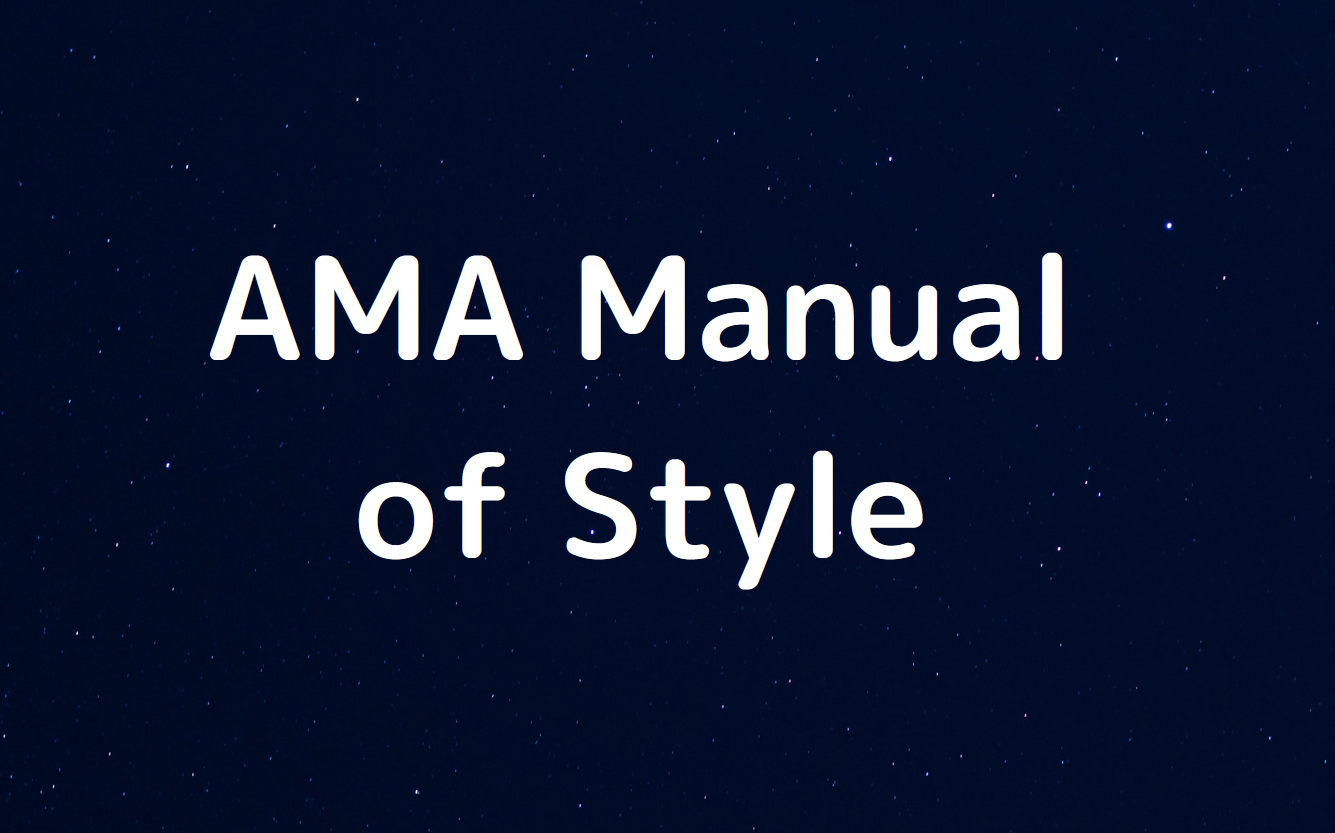Hyphens (ハイフン) と Dashes (ダッシュ) は、関係と表現の明確さのために使用する内部的なpunctuation mark (句読点) である。
① Hyphens (ハイフン)
■Temporary Compounds (暫定複合語)
複合形容詞句が修飾する名詞の前にあるときはハイフンでつなぐが、名詞の後ろにあるとき(※)はハイフンでつながない。
—————-
□名詞+副詞
most–read work in the collection
※The work was the most read in the collection.
It was a placebo–controlled trial.
※The trial was placebo controlled.
This was a well–edited volume.
※This volume was well edited.
The rash was a treatment–related adverse event.
※The adverse event was treatment related.
—————-
□形容詞+名詞
low–quality suture material
※suture material of low quality
highest–quality printing
※printing of highest quality
low–density resolution
※resolution of low density
high–altitude sickness
※sickness at high altitude
very low–birth–weight children
※children of very low birth weight
low–molecular–weight heparin
※heparin of low molecular weight
very low–density lipoprotein
※lipoprotein of very low density
foreign–body reaction
※reaction to a foreign body
total–body imaging
※imaging of the total body
total–breast radiation therapy
※radiation therapy of the total breast
—————-
□日常的に使用されるようになった用語については名詞の前にあっても後ろにあってもハイフンを付ける。
long–term therapy
※the commitment was long–term
a middle–aged man
※he was already middle–aged
the left–handed participants
※the participants who were left–handed
cost–effective system
※a system that was cost–effective
cafeteria–style dining
※the dining was cafeteria–style
—————-
■先頭の要素が数字の複合語で名詞の前に来る場合
18-factor blood chemistry analysis
7-fold increase
half-life
half-lives
3-dimensional (also 3-D)
2-way street
ninth-grade reading level
1-cm increments
■2つの色のコンビネーション
blue-gray eyes
blue-black lesions (lesions were blue-black)
bluish-gray lesions
■ハイフン有りのプリフィクスが付いたベースの言葉を共用する場合
同じbaseにかかる場合は、最後以外はベースの言葉を省略してよい。
first-, second-, and third-grade students
10- and 15-year-old boys
anterolateral and posterolateral aspects
■ハイフン無しのプリフィクスが付いたベースの言葉を共用する場合 (JAMA非推奨)
一般的にはよく使われているが、以下のようにハイフン有りのプリフィクス単体を先に使用し、その後にハイフン無しのプリフィクスが付いたベースの言葉を参照することはJAMAでは推奨しない。
[非推奨] We found a need for pre- and postoperative examination.
[JAMAの推奨] We found a need for preoperative and postoperative examination.
[非推奨] Patients were categorized as hyper- or hypotensive.
[JAMAの推奨] Patients were categorized as hypertensive or hypotensive.
[非推奨] This could be an in- or outpatient procedure.
[JAMAの推奨] This could be an inpatient or outpatient procedure.
■文頭で21から99の数字(基数、序数)をスペルアウトする場合
ハイフンでつなぐ。
Thirty-six patients were examined.
Twenty-fifth through 75th percentile rankings were shown.
One hundred thirty-two people were injured in the plane crash.
■分数を名詞や形容詞として使う場合
ハイフンでつなぐ。
Three-fourths of the questionnaires were returned.
A two-thirds majority was needed.
The flask was three-fourths full.
■範囲の表現
in a 10- to 14-day period
= a period of 10 to 14 days
a 3 × 4-cm strip
= a strip measuring 3 4 cm
a 5- to 10-mg dose
= a dose of 5 to 10 mg
a 0.6-mg/kg dose in
= a dose of 0.6 mg/kg
a 5-, 10-, or 15-mg dose
= in a dose of 5, 10, or 15 mg
a 3-cm-diameter tube
= a tube 3 cm in diameter
5-mm-thick lesion
= a lesion 5 mm thick
a 5-cm-wide strip
= a strip 5 cm wide
■本文の中では、範囲の表現にハイフンは使わない。
The adverse events were experienced by 5% to 10% of the group.
■範囲を表す場合にハイフンを使ってよいのは、以下の2パターン。
(1)年度の表記
In subsequent national surveys, the prevalence of diabetes in the Chinese population was 2.5% in the 1994 survey and 5.5% in the 2000-2001 survey.
(2)カッコ内での表記、図表での表記
The patients’ median age was 56 years (range, 31-92 years).
■数値にマイナスが含まれる場合は、括弧内や表においてもハイフンは使用しない。
Change in body weight was -4.0 kg (95% CI, -5.8 to -2.3 kg).
■ハイフンを使わないプリフィクス
以下のプリフィクスにはハイフンを使わない。
ante-, anti-, auto-, bi-, co, contra-, counter-, de-, e-, eco-, extra-, infra-, inter-, intra-, micro-, mid-, multi-, non-, over-, pre-, post-, pro-, pseudo-, re-, semi-, sub-, super-, supra-, trans-, tri-, ultra-, un-, under-
antimicrobial
coauthor
autoimmune
codirects
coexistence
nonresident
coidentity
overproduction
countermeasure
overrepresented
coworker
overtreatment
deidentify
postopearative
ecogenetic
posttraumatic
preexisting
interrater
reevaluation
midaxillary
repossess
midbrow
transsacral
multicenter
ultramicrotome
nonnegotiable
underrepresented
★emailもハイフンを使わないが、次の単語にはハイフンを使用する。(11版で追加)
e-cigarette, e-commerce, e-prescribing, e-print
■上記のハイフンを使わないプリフィクスの場合でも、意味が曖昧になる場合はハイフンを付けてよい。
co-opt
co-payment
co-twin
intra-aortic
non-breastfeeding.
■anti-, neo-, pre-, post-, and mid-の後に、数字や固有名詞がくる場合はハイフンを付ける。
mid-1900s
mid-Atlantic crossing.
■曖昧にならない限り、-hood, -less, -like, -wiseの後にはハイフンを付けない。
womanhood
manhood
shoeless
insulinlike
catatoniclike
probandwise concordance
■-wideの使い方 (11版で追加)
-wideは、通常worldwide, citywideのようにハイフンは付けない。
しかし、固有名詞につける場合や3音節以上の単語にはハイフンが付く。
Chicago-wide
university-wide
また、以下のように可読性をよくするためにハイフンを付ける場合もある。
genome-wide association studies
hospital-wide implementation
■lyで終わる副詞にはハイフンを付けない。
the clearly stated purpose
clinically relevant variables
a highly developed species
biologically mediated therapy
clinically derived databases
previously published recommendations
★ただし、early についてはたまたまlyで終わっているが、別の単語から作られた副詞ではないため、ハイフンを付ける。(11版で追加)
early-onset Alzheimer disease
■文字や数字が2番目に来る場合はハイフンを付けない。
grade A eggs
study 1 protocol
type 1 diabetes
phase 2 study
② Dashes (ダッシュ)
ダッシュは、特定の意味を伝えたり、文中の特定の部分を強調して明確にしたりするために使われる。
■Em Dash
Em Dashは、思考の中断や中断が顕著であることを示すために使用するが、あまり使わない方がよい。別の句読点(コンマやコロンなど)で十分な場合、には、Em Dashを使用しないこと。
He was young-in his early 50s—with a body ravaged by an incurable, highly aggressive prostate cancer.
■En Dash
En Dashはハイフンより長く、Em Dashの半分の長さ。En Dashは、ハイフンでつながれた修飾子または複合修飾子、2つ以上の単語またはハイフンでつながれた単語で構成される1つの要素、または修飾される単語が複合である場合に使用する。
Winston-Salem–oriented group
reverse transcriptase–polymerase chain reaction
physician-lawyer–directed section
anti–Norwalk virus
non–Q wave
non–critical access hospitals
phosphotungstic acid–hematoxylin stain
shock wave–facilitated intracoronary cell therapy
National Cancer Institute–funded research networks
decision tree–based analysis
post–World War I
non–small cell carcinoma
■2-Em Dash
2-Em Dashは、単語内の欠落した文字を示すために使用する。
The study was conducted at N—— Hospital, noted for its low autopsy rate.
■3-Em Dash
3-Em Dashは、1つ以上の欠落した単語を表示するために使用する。
Each participant was asked to fill in the blank in the following statement. “I usually sleep ——— hours per day.”
I admire Dr ——— too much to expose him in this anecdote.
~~~ AMA Manualの記載情報 ~~~
Hyphens, Dashesに関する記載は以下の通り。
■AMA Manual 9版
[章] 6.3 Hyphens and Dashes
[ページ] P.206
■AMA Manual 10版
[章] 8.3 Hyphens and Dashes.
[ページ] P.344
■AMA Manual 11版
[章] 8.3 Hyphens and Dashes.
[ページ] P.459
~~~~~~~~~~~~~~~~~

コメント